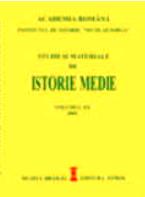Otomanii şi Hoarda de Aur. Relaţiile lui Murad II cu Ulug Mehmed
The Ottomans and the Golden Horde. The Relation of Murad II with Ulug Mehmed
Author(s): Nagy PienaruSubject(s): History
Published by: Institutul de Istorie Nicolae Iorga
Keywords: the international background and the diplomatic links between the Ottomans and the Golden Horde;
Summary/Abstract: An analysis is made of the international background which led to the resuming of diplomatic links between the Ottomans and the Golden Horde. In the last decade of the 14th century, Khan Toktamýş, Sultan Bayezid and Berkuk made an alliance to check off the offensive of Timur Lenk. However, in the third decade of the 15th century, the resuming of diplomatic relations between Bursa and Saray was not due to a common peril, but rather to the competition between Murad II and Sigismund of Luxembourg over domination of the Danube line. In order to reduce the Ottoman pressure, the Hungarian King resorted to the involvement of Ulug Mehmed and the leader of the Ak koyunlu Confederation, Kara Yülük, against Murad II. The Ottomans reacted promptly. Murad II sent to the northern region of the Black Sea an embassy commissioned to block the Hungarian project. Interested in a collaboration with the Ottomans, Ulug Mehmed sent an official letter to Murad II (14 March 1428). The contents of this letter were distorted by historians who wrongly identified ulak with the Romanians (vlachs) of Moldavia or Wallachia. In fact, in the context of the document, the paronime has the meaning of rapid dispatcher travelling on horseback. In the years 1428-1429, by initiative of Murad II, the axis Saray–Bursa–Cairo was created against the Christians of the Mediterranean and Black Sea regions.
Journal: Studii şi Materiale de Istorie Medie (SMIM)
- Issue Year: 2002
- Issue No: XX
- Page Count: 19
- Language: Romanian
- Content File-PDF

